Related Research Articles

Maggie Lena Walker was an American businesswoman and teacher. In 1903, Walker became both the first African American woman to charter a bank and the first African American woman to serve as a bank president. As a leader, Walker achieved successes with the vision to make tangible improvements in the way of life for African Americans. Disabled by paralysis and a wheelchair user later in life, Walker also paved the way for people with disabilities.

Lila Meade Valentine was a Virginia education reformer, health-care advocate, and one of the main leaders of her state's participation in the woman's suffrage movement in the United States. She worked to improve public education through her co-founding and leadership of the Richmond Education Association, and advocated for public health by founding the Instructive Visiting Nurses Association, through which she helped eradicate tuberculosis from the Richmond area.

Mary Burnett Talbert was an American orator, activist, suffragist and reformer. In 2005, Talbert was inducted into the National Women's Hall of Fame.
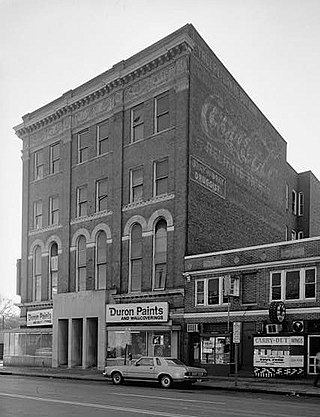
The True Reformer Building is an historic building constructed for the True Reformers, an African American organization founded by William Washington Browne. The building is at 1200 U Street, Northwest, Washington, D.C. in the U Street Corridor (Cardozo/Shaw) neighborhood. It was designed by John Anderson Lankford. The building was commissioned by the Grand United Order of True Reformers in 1902. It was dedicated on July 15, 1903.

Kate Langley Bosher was an American novelist from Virginia, best known for her novels Mary Cary (1910) and Miss Gibbie Gault (1911). She was also a suffragist and founding member and officer of the Equal Suffrage League of Virginia.

Rev. William Washington Browne was American Union Army soldier, and the founder of the Grand Fountain of the United Order of True Reformers. Browne was also a former slave, minister, and a teacher.

Grand United Order of True Reformers was an African-American fraternal organization founded in 1873 in Alabama and Kentucky. Originally managed by deputies of the all-white, pro-temperance organization, the Independent Order of Good Templars, the Grand Fountain of the United Order of True Reformers, or the True Reformers, was re-organized c. 1875 by William Washington Browne in Richmond, Virginia. This organization existed as a business and a mutual-aid society during the era of Jim Crow segregation laws, and it supported the growing African-American middle class through economic opportunities and education, before its closure in 1934.

Mary-Cooke Branch Munford was a Virginia activist for women's rights, civil rights, women's suffrage, and education.
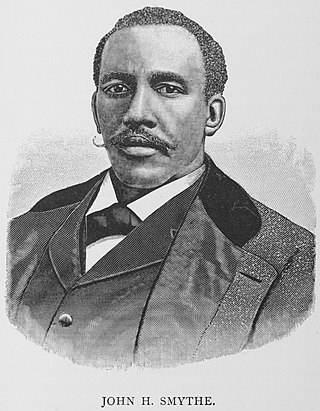
John H. Smythe was the United States ambassador to Liberia from 1878 to 1881 and from 1882 to 1885. Before his appointment, he had various clerkships in the federal government in Washington, DC, and in Wilmington, North Carolina. Later in his life he took part in a number of leading African American organizations and was president of a Reformatory School outside of Richmond, Virginia.

Rosa L. Dixon Bowser was an American educator. She was the first African-American teacher hired in Richmond, Virginia. She organized the Virginia Teachers' Reading Circle, which became the Virginia State Teachers Association, the first organization representing black teachers in Virginia, serving as the organization's president from 1890 to 1892. Bowser was president of the Woman's Christian Temperance Union in Virginia, as well as founder and first president of the Richmond Woman's League. She was a correspondent for the magazine The Woman's Era, and wrote essays for national publications.

Victoria Clay Haley, later Victoria Clay Roland, was an American suffragist, clubwoman, bank executive, and fundraiser based in St. Louis, Missouri and later in Chicago.
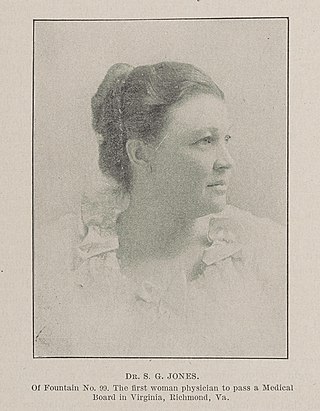
Sarah Garland Boyd Jones was an American physician from the U.S. state of Virginia. She was the first woman to receive a certificate from the Virginia State Medical Examining Board and co-founded a hospital in Richmond, Virginia with her husband, Miles Berkley Jones.
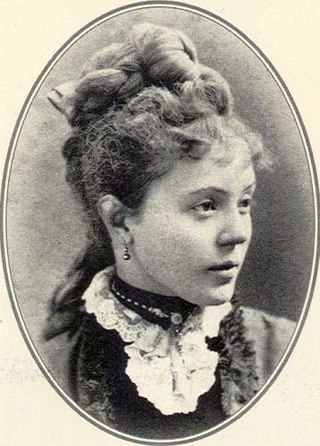
Josephine Beall Willson Bruce was a women's rights activist in the late 1890s and early 1900s. She spent a majority of her time working for the National Organization of Afro-American Women. She was a prominent socialite in Washington, D.C., throughout most of her life where she lived with her husband, United States Senator Blanche Bruce. In addition to these accomplishments, she was the first black teacher in the public school system in Cleveland, and she eventually became a highly regarded educator at Tuskegee University in Alabama.
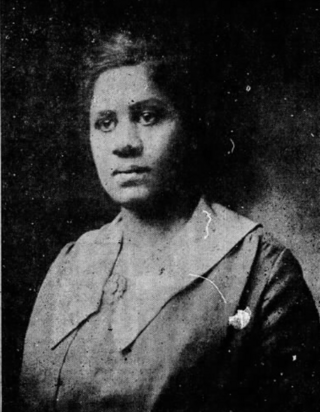
Ora Brown Stokes Perry (1882–1957) was an American educator, probation officer, temperance worker, suffragist, and clubwoman based in Richmond, Virginia.

EleanoraClare Gibson Houston was an American painter, women's rights advocate, and suffragist. Born and raised in Richmond, Virginia, Houston studied art at an early age, traveling to New York and abroad, before returning to Richmond to teach and open a studio with Adele Goodman Clark. She was an active participant in the women's suffrage movement in Virginia.
Millie Lawson Bethell Paxton was an American civic leader, political activist, and suffragist from Virginia.
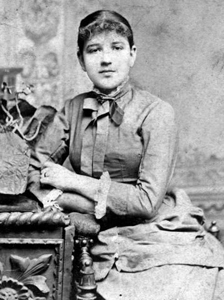
Ida Mae Thompson was an American suffragist. She was active in the Equal Suffrage League of Virginia and later worked for the Works Progress Administration's Historical Records to obtain and archive records from the suffrage movement in Virginia.
Hill Montague was a Virginia lawyer and politician.
References
- 1 2 3 4 "NJ Suffragists – Mary E. Cary Burrell (1866-1949) | Discover NJ 350". discovernjhistory.org. Retrieved 2020-09-23.
- ↑ "Teacher Mary Burrell worked tirelessly for women's rights, prison reform, and civil rights". 22 January 2024.
- 1 2 Annual Message and Accompanying Documents of the Mayor of Richmond to the City Council. Richmond, Virginia: Williams Printing Company. 1890. p. 42.
- 1 2 3 4 5 Burrell, William Patrick (1909). Twenty-five Years History of the Grand Fountain of the United Order of True Reformers, 1881-1905. Grand Fountain, United Order of True Reformers.
- ↑ Hollie, Donna Tyler. "Grand Fountain of the United Order of True Reformers". Encyclopedia Virginia. Virginia Humanities. Retrieved 28 July 2018.
- ↑ Hughey, Matthew, ed. (2013). Race and Ethnicity in Secret and Exclusive Social Orders: Blood and Shadow. Routledge. ISBN 9781317432470.
- ↑ Livingston Adams, Betty. "Biographical Sketch of Mary E. Cary Burrell". Alexander Street. Retrieved 2023-03-28.